Pontiac, Mich. Pond Rehabilitation
Pontiac, Mich. | Education | Stormwater System Repairs
Overview:
Improper pond dredging and sediment stabilization leads to necessary stormwater pond rehabilitation.
Problem:
An educational facility in Pontiac, Mich. completed a pond rehabilitation in which the pond was dredged to remove excessive sediment but was improperly repaired post sediment removal. Detention ponds function to hold volumes of water to mitigate flooding and also offer water quality measures by allowing suspended solids inside the water to settle and separate from the water as it continues downstream. Detention ponds are designed to hold water temporarily and should draw down within 72 hours of a rain event. Over time, the settled solids accumulate and reduce the volume of the pond. To restore the pond to its original working order, the sediment layers are removed from the bottom, a process called dredging. During the previous repair, dredged materials were placed on the embankment of the pond without being stabilized, causing the sediment to slide back into the pond. Additionally, extraneous water was seeping out of the ground in a concentrated area. This was suspected to be a buried inlet. In the initial dredging process, excess material was placed on top of the inlet, blocking stormwater flow into the pond from the catch basin upstream.
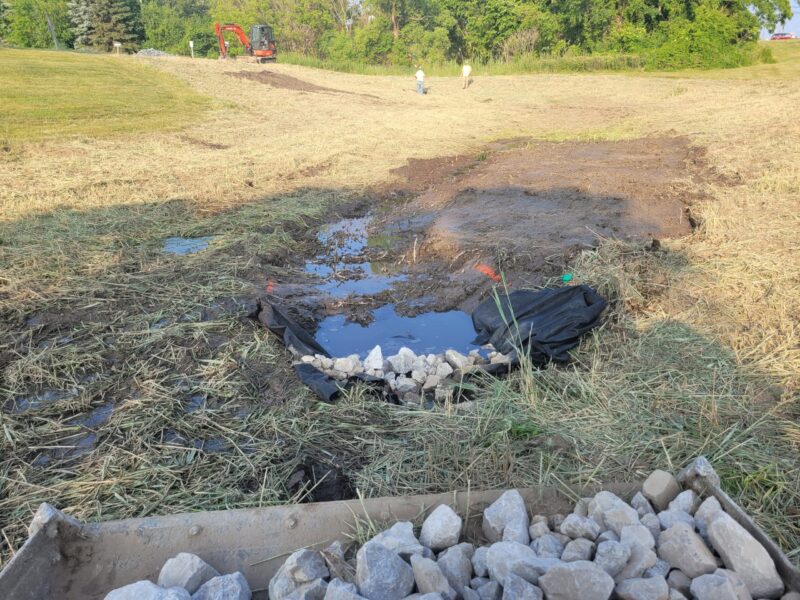
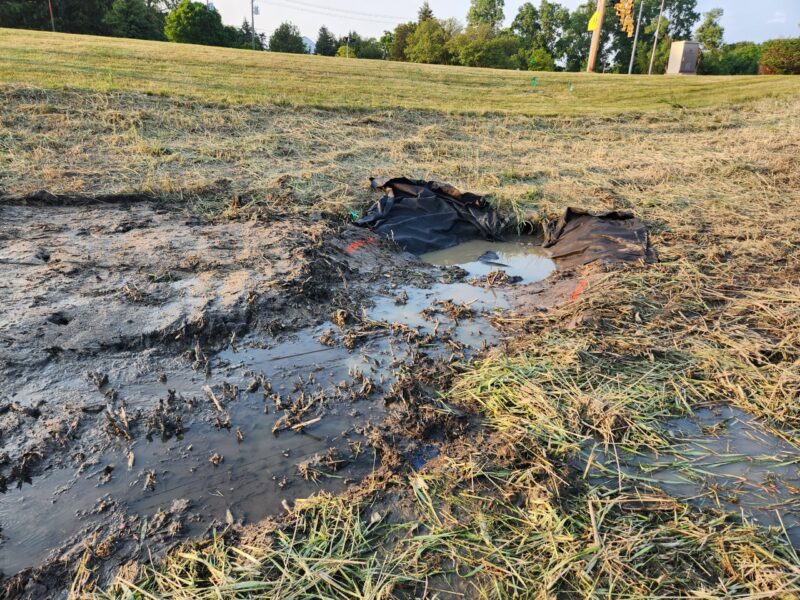

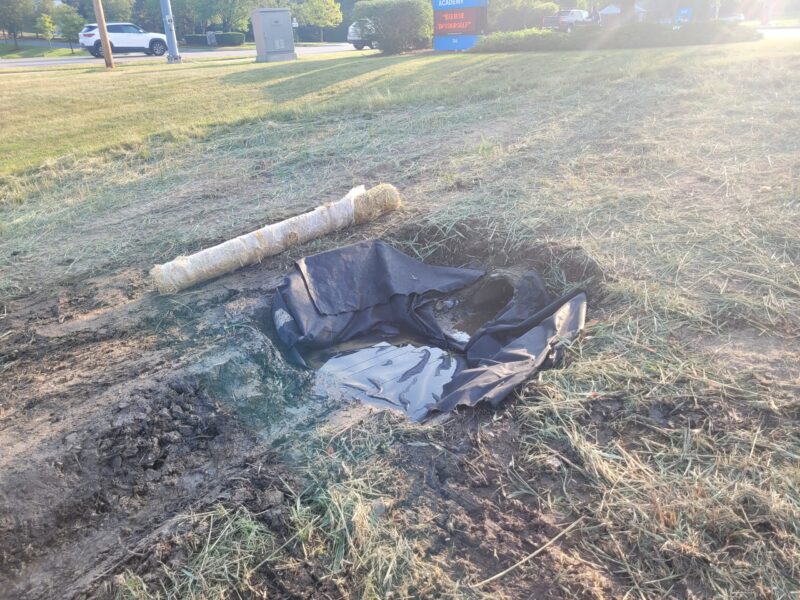
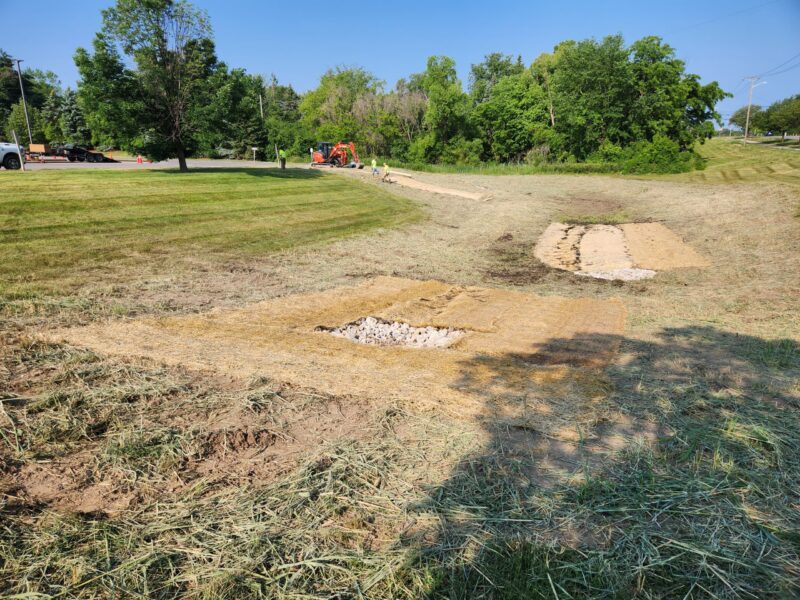
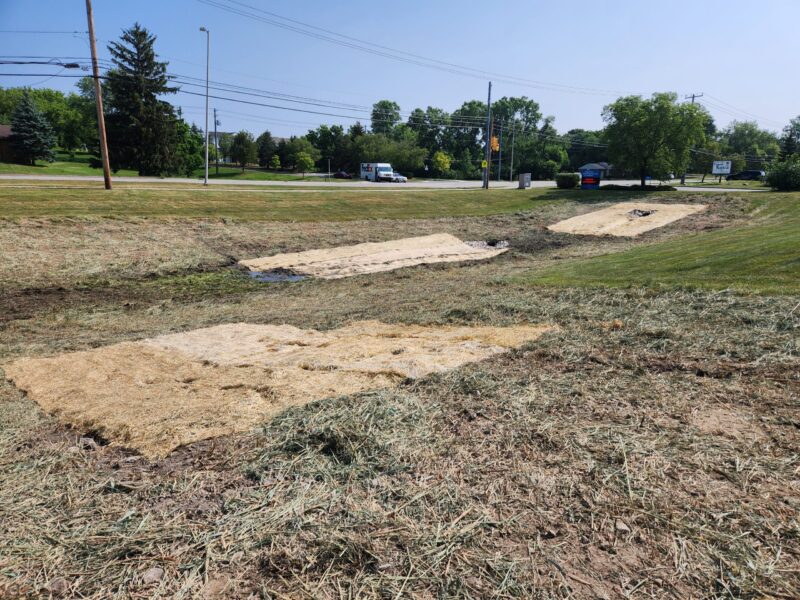
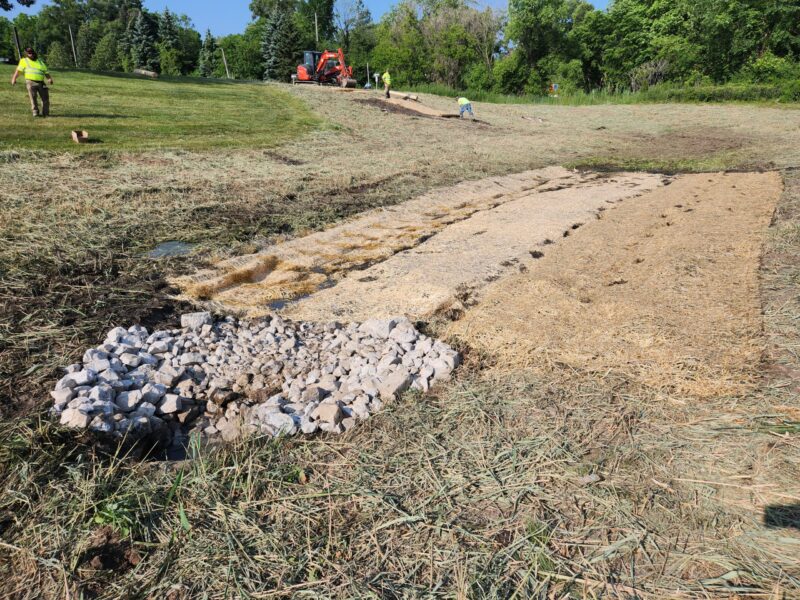
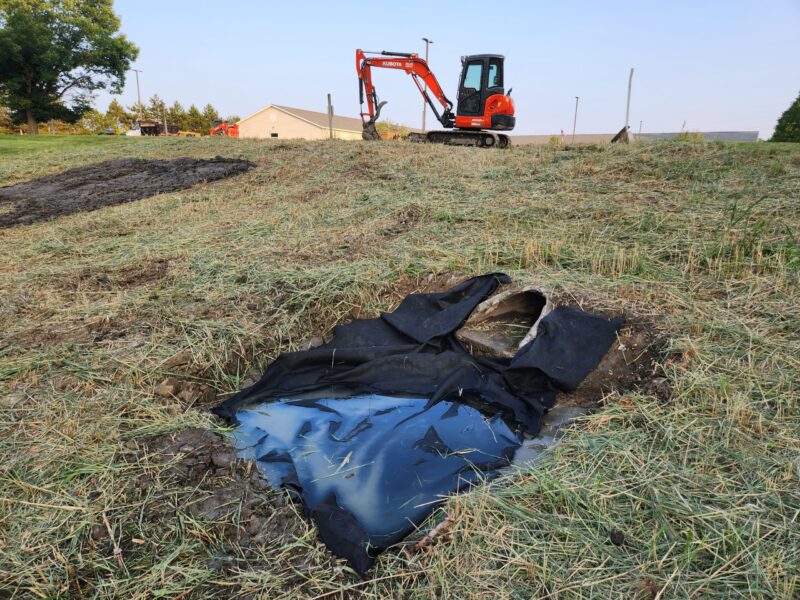

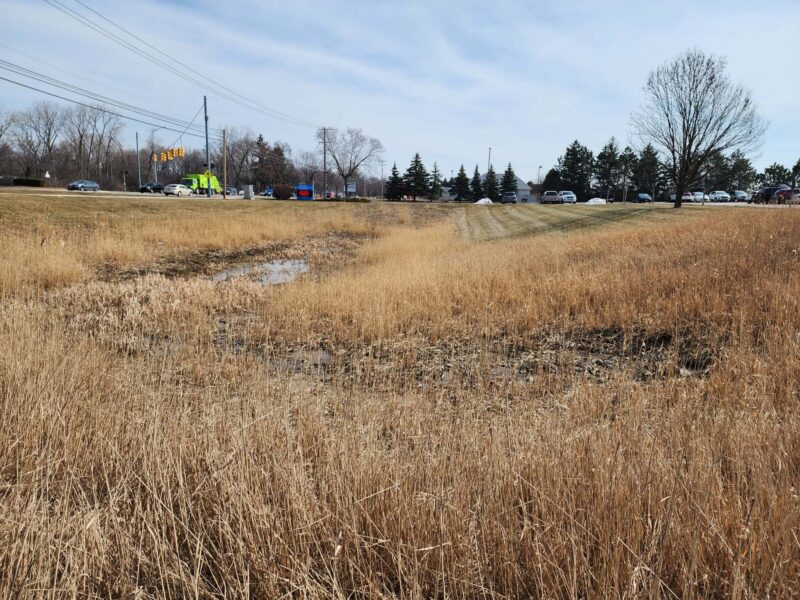
Before

After
Solution:
AQUALIS was called in to repair the pond. First AQUALIS completed an exploratory dig to find the buried inlet. Once the inlet had been located, it had to be assessed for internal deficiencies and identify repairs that would need to take place. After the inspection was completed, the inlet was deemed functional, and the next phases could begin. AQUALIS then began to regrade and reseed the slope around the retention pond back to restore it to its initial design. The grade of the slope and embankment around a retention pond is extremely important as a slope that is too steep will erode during storms as rainwater loosens the soil and carries excess material into the pond. But a slope that is not steep enough will fail to collect debris and trash before it reaches the water. The slope of a retention or detention pond acts as a funnel to collect stormwater runoff and reduce flooding. Every retention pond is designed for the specific site it operates on. Engineers calculate rainfall, soil qualities, and surrounding impervious material to understand how to best store stormwater on a site.
AQUALIS also provided the necessary erosion control to complete the agreed upon repair. The area around the inlet also had to be stabilized to ensure proper flow and conveyance of stormwater. Rip rap was installed around inlets and outlets to prevent future wash out or expedited erosion. AQUALIS seeded the bare and eroded area in an attempt to further stabilize the vegetated shelf temporarily.
Once the slope of the stormwater pond was reestablished and the inlet was functioning as designed, the area could be stabilized. AQUALIS used seeding mats to simultaneously stabilize the soil and seed the area with new vegetation. The type of seed is chosen based on soil type and region, the grass must be tolerant to the weather, in this case frost resistant.
Future work will be done on this site, as budgetary constraints limited the amount of work that could be completed. The issue was remediated in a cost-effective manner on behalf of the client. The work done will limit future damage, until budgetary constraints can allow for additional phases of corrective repairs involving restoring the pond to the originally designed capacity.
